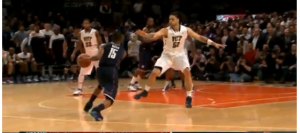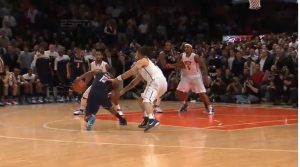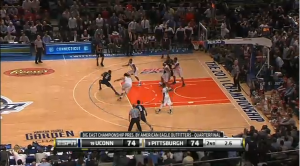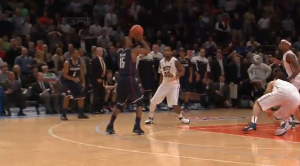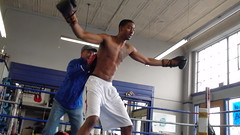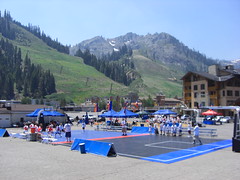As soon as Kemba Walker made this shot against Pittsburgh during the Big East conference tournament, thousands of aspiring hoopers went right outside on their hoops, mimicking and imagining the moment being theirs. They attempted to cross over like Kemba, the hesitation like Kemba and then they planted their right foot and pushed back into jump shot only to find mixed results. The “Kemba Step Back” has become legendary among basketball fans. In just one year, Kemba has made continuos buzzer beaters and big step back jump shots so much that he has defined a move and made it his own, the “Kemba Step Back”. It is easy as fans and spectators to get caught up in the imagery and the scale of the moment in which the player makes the spectacular signature move , but it is in the details that will unlock the true glory.
With Kemba Walker leading UCONN into the Final Four this Saturday it is a good time to go back and look at the “Kemba Step Back” move and to define the movements that made him successful in hitting the biggest shot in his career.
The Athlete Behind the Movement: “Kemba Step Back”
1. The initial image proves that Kemba has great movment patterns. His first crossover is a classic Lateral Lunge that gives him ability to change direction under control for the next counter.
2. After the crossover he added a hesitation to the move. The reverse lunge which allows Kemba to take a “Lee Taft” false step to change tempo. Plantar flexion and hip extension in the right foot will push him into the defenders space to create the beginning of the infamous step back.
3. Look at the force shift over the front of the lead leg. However the hips and center of gravity remain vertical in nature and provide balance under extreme angles. The angle he created here resulted in major extension for the step-back.
4. The push off from the lead leg with the hips in athletic stance provide the ability to create extension. The back leg (left foot) is reaching back to find space on floor and also to create a Ray Allen (1,2) foot contact for tempo and efficiency into his jump shot.
5. The ability to get the feet set and hips set after a 3 foot step back is key. Most athletes will fall forward because of poor hip position and posture, leading to poor balance in shooting pocket.
The rest is history……
Train for the step back:


